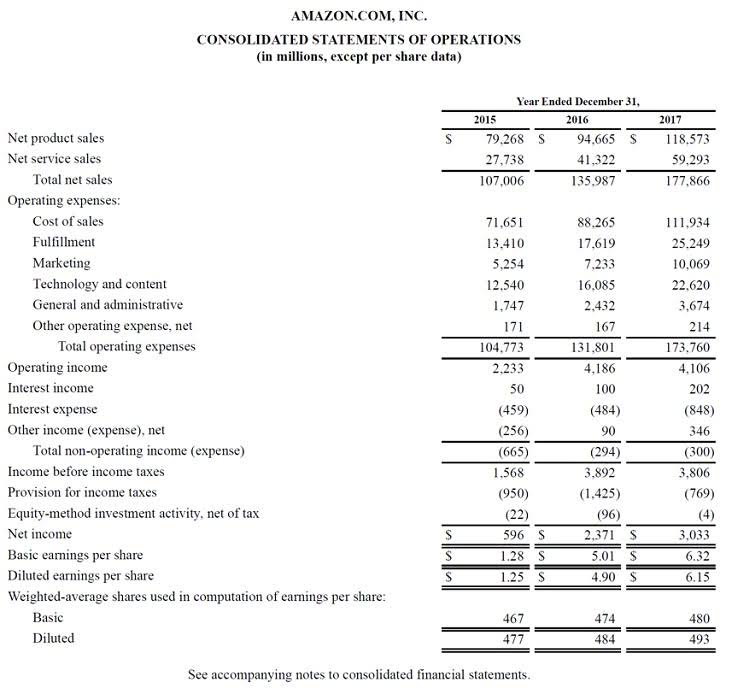
FIFO stands for “first in, first out”, which is an inventory valuation method that assumes that a business always sells the first goods they purchased or produced first. This means that the business’s oldest inventory gets shipped out to customers before newer inventory. Both manufacturers and retailers list cost of good sold on the income statement as an expense directly after the total revenues for the period. COGS is then subtracted from the total revenue to arrive at the gross margin. Both operating expenses and cost of goods sold (COGS) are expenditures that companies incur with running their business; however, the expenses are segregated on the income statement. Unlike COGS, operating expenses (OPEX) are expenditures that are not directly tied to the production of goods or services.
- Let’s say you’ve sold 15 items, and you have 10 new items in stock and 10 older items.
- Cost of Goods Sold (COGS), otherwise known as the “cost of sales”, refers to the direct costs incurred by a company while selling its goods or services.
- This impacts financial KPIs like net income and asset valuation for analysis.
- The cutting-edge technology and tools we provide help students create their own learning materials.
- So, multiplying the cost of the new units (£90) with the quantity of those items sold (3), we get the next part of the COGS calculation, i.e., £270.
- Or, using the same figures, we can see that we purchased $1,800 worth of goods and were left with $1,100, so we must have sold $700 worth of goods (the cost of goods that we sold).
Con: Higher taxes

To use the periodic inventory system, purchases related to manufactured goods must be accumulated in a “purchases” account. Thus, if a company has beginning inventory of $1,000,000, purchases during the period of $1,800,000, and ending inventory of $500,000, its cost of goods sold for the period is $2,300,000. Thus, Shane would sell his June inventory before his January inventory. This gives us the total cost of all inventory, but we can’t stop there.
Applying the FIFO Method Step by Step in Business Scenarios
The oldest bars in her inventory were from batch 1 so she will count 100 at the unit cost of batch 1, $2.00. For the remaining 200 she sold uses the unit cost of batch 2, $1.00. To calculate her COGS for the trade show, Bertie will count 100 bars at $2.00 and 200 at $1.50. It is called the cost of goods sold formula (or the cost of sales formula). While FIFO offers a clearer snapshot of inventory composition, weighted average can be easier to apply operationally.
How the FIFO inventory valuation method works
The company will report the oldest costs on its income statement, whereas its current inventory will reflect the most recent costs. FIFO is a good method for calculating COGS in a business with fluctuating inventory costs. The FIFO method, an abbreviation for the First-In, First-Out method, is widely used in the field of business, particularly in inventory management and accounting.


Without sales the company’s cash remains in inventory and unavailable to pay the company’s expenses such as wages, salaries, rent, advertising, etc. To effectively manage direct and indirect expenses, it is essential to have a clear understanding of the company’s financial situation. This includes identifying all of the direct and indirect expenses, as well as tracking and analyzing them regularly. By doing so, businesses cost of goods sold fifo formula can identify areas where costs can be reduced, and optimize their operations accordingly. The average cost inventory valuation method uses an average cost for every inventory item when calculating COGS and ending inventory value. It can be especially misleading if you have several different types of products with varying production costs.
A company’s opening inventory is $100,000, purchases during the period amount to $150,000, and the closing inventory is $120,000. A lower COGS percentage indicates higher profitability, while a higher percentage suggests increased production costs. The company’s COGS for the month is $60,000, representing the cost of materials used to manufacture and sell the furniture. A furniture manufacturer starts the month with $50,000 worth of raw materials. FIFO and LIFO are helpful tools for calculating payroll the value of your business’s inventory and Cost of Goods Sold. FIFO assumes that your oldest goods are sold first, while LIFO assumes that your newest goods are sold first.
- The cost of goods sold (COGS) is an accounting term used to describe the direct expenses incurred by a company while attempting to generate revenue.
- This card has separate columns to record purchases, sales and balance of inventory in both units and dollars.
- A retailer like Shane can choose to use FIFO (first-in, first-out) or LIFO (last-in, last-out) inventory costing methods.
- A manufacturing company would procure the raw materials from their suppliers before processing the individual items to create their end product.
- More frequent cycle counts focused on high-value SKUs also contribute to improved precision of LIFO figures between full audits.
- One way is to ensure that the selling price is more than the cost of the goods sold, aka COGS.
How to Calculate FIFO and LIFO
This figure HVAC Bookkeeping helps companies determine their gross profit and is key to understanding how well the organization is controlling expenses, managing labor, and tracking supplies. COGS is not addressed in any detail in generally accepted accounting principles (GAAP), but COGS is defined as only the cost of inventory items sold during a given period. Not only do service companies have no goods to sell, but purely service companies also do not have inventories. If COGS is not listed on a company’s income statement, no deduction can be applied for those costs. Companies using perpetual inventory system prepare an inventory card to continuously track the quantity and dollar amount of inventory purchased, sold and in stock.
